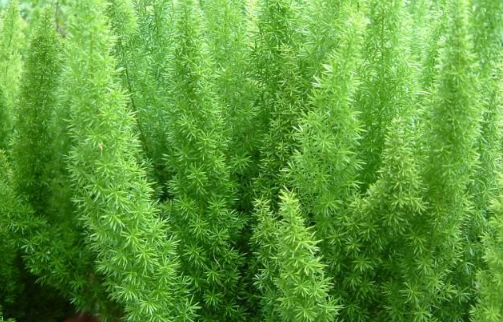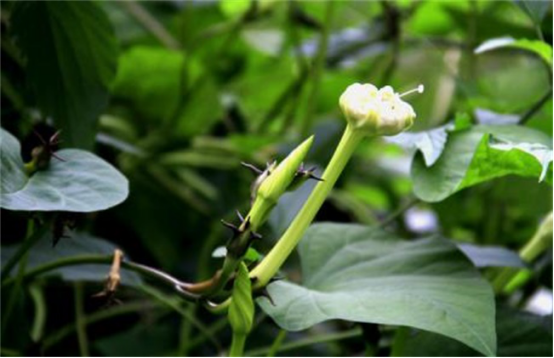How to cultivate coral vines
Soil basin requirement
Coral vines like warm and humid environments, and the suitable temperature for growth is between 22 ℃ and 30 ℃. Mature coral vines are a little hardy, but seedlings must not experience cold climates such as frost. The most suitable soil environment for growing coral vines should be moist, fertile, well drained and rich in humus. And coral vines should be watered frequently to keep the soil in a moist state. In addition, the choice of pots is also very important, flowerpots have a certain depth, which can promote the growth of roots.
Timely pruning
Attention should be paid to setting up posts when raising coral vines in pots. The scaffold can be tied into various forms, as long as it is the overall aesthetics that facilitates the growth of coral vines. As a vine plant, coral vine has strong extensibility, so pay attention to pruning branches in time to prevent the overall beauty from being damaged by its free growth.

More water and more fertilizer
Coral vines like a humid environment, so they should be fully watered during their growth. Keep the soil moist and spray water to the leaves when it is hot in summer. Keep the soil not dry in other periods. Coral vines need more fertilizer during the growing period, and they need to be fertilized every other week or so. More phosphate and potash fertilizer should be applied after the emergence of flower buds.
After sharing the breeding methods of coral vines, someone must want to ask, so what are the matters that need to be paid attention to? Please work with the editor to learn more about it.
Matters needing attention in the culture of coral vines: adequate light
Remember to keep the coral vines in the shade during the summer heat, but make sure you have three or four hours of direct sunlight every day. Only in this way will coral vines not grow in vines. If it is a family pot conservation, you need to put the flowerpot on the south or west balcony as far as possible to ensure sufficient light.
Promote branching
In order to ensure the plump shape of the coral vine, it is necessary to pick the heart many times at the initial stage of growth to promote its multi-branching, so that the coral vine has the overall beauty.
The above are the breeding methods of coral vines prepared for you and the places that need to be paid attention to. I hope it will be useful for you who want to grow coral vines.
Culture method of Coral Vine
It grows luxuriantly during the cool season in the tropics or subtropics. Coral rattan open field cultivation is mainly in South China, should choose fertile soil cultivation, because the branches are long, planting should not be too dense, generally used as hedge vertical greening, plant spacing of 4 meters is appropriate. There are many rows of potted plants in other areas, which require high temperature greenhouse to survive the winter. Fewer diseases and insect pests.
Coral vines grow luxuriantly in the tropical or subtropical south during the cool season. Sprouting and growing leaves after spring warmth; when the winter temperature is below 10 ℃, the leaf color will turn dark green and sometimes wither slightly, resulting in less diseases and insect pests.
Coral rattan is fond of high temperature, and the suitable temperature for giving birth is about 22-30 degrees. Like moist, grow better in bright light environment, like fertilizer, slightly cold-resistant, generally can survive the winter safely above 5 ℃ in winter, like to grow in loam with good drainage and rich in humus.
The quality of coral vine cultivation soil is the best in fertile loam or humus loam, good drainage and sunshine, lack of sunshine and light color. Sex is fond of high temperature, and the suitable temperature for childbearing is about 22-30 degrees.
After the stem of the young plant is elongated, it is necessary to set up a pillar for climbing. If there are many branches, leave 2-3 branches as the main branches, cut off the rest, and then pick the heart after the scaffolding to promote its more branches.
During the growth period from spring to summer, the water supply should be adequate, and all kinds of organic fertilizers or three elements can be used for fertilization, with a small amount every 1-2 months.
- Prev

How to raise asparagus
Soil Asparagus has higher requirements for soil, so it is necessary to choose fertile, loose and breathable soil. This soil can be configured by itself. The required soil can be obtained by mixing rotten leaf soil, garden soil and river sand in a ratio of 2:1:1. You can also buy special soil for Asparagus from flower shops.
- Next

Culture of moonlight flower
Timely transplanting moonlight can be said to be not easy to raise plants, for many flower lovers, raising a moonlight is a luxury, the reason for luxury is that the survival rate is very low after each transplanting. In fact, the important reason for the unsuccess of transplanting is that the transplanting time is not right.
Related
- Fuxing push coffee new agricultural production and marketing class: lack of small-scale processing plants
- Jujube rice field leisure farm deep ploughing Yilan for five years to create a space for organic food and play
- Nongyu Farm-A trial of organic papaya for brave women with advanced technology
- Four points for attention in the prevention and control of diseases and insect pests of edible fungi
- How to add nutrient solution to Edible Fungi
- Is there any good way to control edible fungus mites?
- Open Inoculation Technology of Edible Fungi
- Is there any clever way to use fertilizer for edible fungus in winter?
- What agents are used to kill the pathogens of edible fungi in the mushroom shed?
- Rapid drying of Edible Fungi

